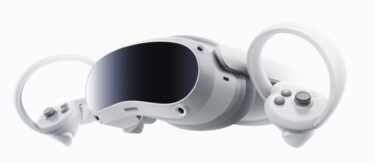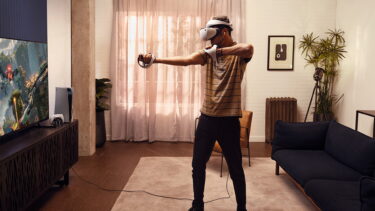After Meta and Apple, Pico now wants to focus more on hand tracking. A paradigm shift in VR?
According to reports, Pico wants to change the primary input method for its own VR headset in the future. According to the report, hand tracking control is intended to reduce the dominance of VR controllers. The VR subsidiary of TikTok owner ByteDacne is not alone in this.
VR controller as a classic input device
Since the beginning of the second big hype in VR history a little more than ten years ago, VR headsets have traditionally been controlled by VR controllers. Current devices such as Pico 4, Meta Quest 2 or Playstation VR 2 also rely on controllers as the primary input method. However, this may change in the future.
While Meta has been experimenting with hand tracking for years and made significant advancements in the Quest 2, Sony is the only major manufacturer to completely abandon optional input without a haptic device in the PSVR 2.
Hand tracking: From experiment to standard?
With Quest 3, Meta will continue to focus on hand tracking and mixed reality. The Apple Vision Pro announced at this year’s WWDC will even reject VR controllers completely. The VR/AR headset is controlled via hand tracking, eye tracking and voice.
Hand tracking is also becoming more popular on the developer side. XR studio Owlchemy Labs, which was acquired by Google in 2017, is fully committed to hand tracking. At Gamescom 2022, COO Andrew Eiche told MIXED that hand tracking is the future of VR. He said the controls are more natural, making it easier to get started.
Pico promotes hand tracking
ByteDance subsidiary Pico is also planning to invest more in the free-form input method. As UploadVR reports, ByteDance is said to be drawing a significant amount of funding from studios that develop exclusively for controller control.
Officially, Pico says it encourages developers to use hand tracking wherever possible. However, users should always be able to use controller-based content if they wish.
Is a paradigm shift coming?
It will be a few years before even complex and sophisticated XR applications can be easily controlled by using hand tracking on all platforms. Implementing hand and finger tracking is a much more challenging task for both hardware and software developers than using VR controllers.
In addition, hand tracking has a major disadvantage compared to VR controllers: the lack of haptics. Today’s hand tracking is still too imprecise and does not provide any feedback, which affects immersion in some applications. Haptic controllers are not going away anytime soon.
In addition, existing VR games would have to be completely redesigned to use hand tracking, which can be a significant and potentially prohibitive effort for developers. If there ever is an industry-wide transition, it will be a gradual process that will take several years and generations of devices.
Source: Mixed News





